Venice VR 2020. Some stories stay with you forever. Back when I was a teenager, my parents would spend hours telling me about Vajont and the tragedy that took place there.
Vajont fascinated me – it captured my young mind – but I also felt saddened and deeply angered, as it is one of those avoidable tragedies – if only “those who make the decisions” had been a bit more honest to themselves… and a bit less attached to money.
About Agnese
Agnese is from Italy and joins as new author. We met in 2018, in Venice, had a few drinks together, discussed and laughed a lot – and found out that we share many views and interests about immersive arts. I am therefore more than happy that she agreed to write this blog article – and hopefully many more.
Vajont and a Mountain named Toc
There was a mountain called Monte Toc, or Mount Toc – a prophetic name in itself: in the local dialect, toc means a “piece that is rotten inside.” This mountain collapsed into an artificial lake, surging over the Vajont dam and flooding the valley below, killing 1917 people – destroying everything.
This was October 9, 1963. Even now, almost 60 years later, you can see traces of the past if you happen to pass by Longarone, Veneto. That perfect dam, standing stoically on high – a monument to the ability of Italian engineers and constructors – gives you that feeling. A place of lasting pain, a grey monument to bad decisions, unfeeling companies and lost lives.
To this day, the tragedy of Vajont remains one of the most well-known environmental and human disasters in Italy, albeit certainly not the only one.
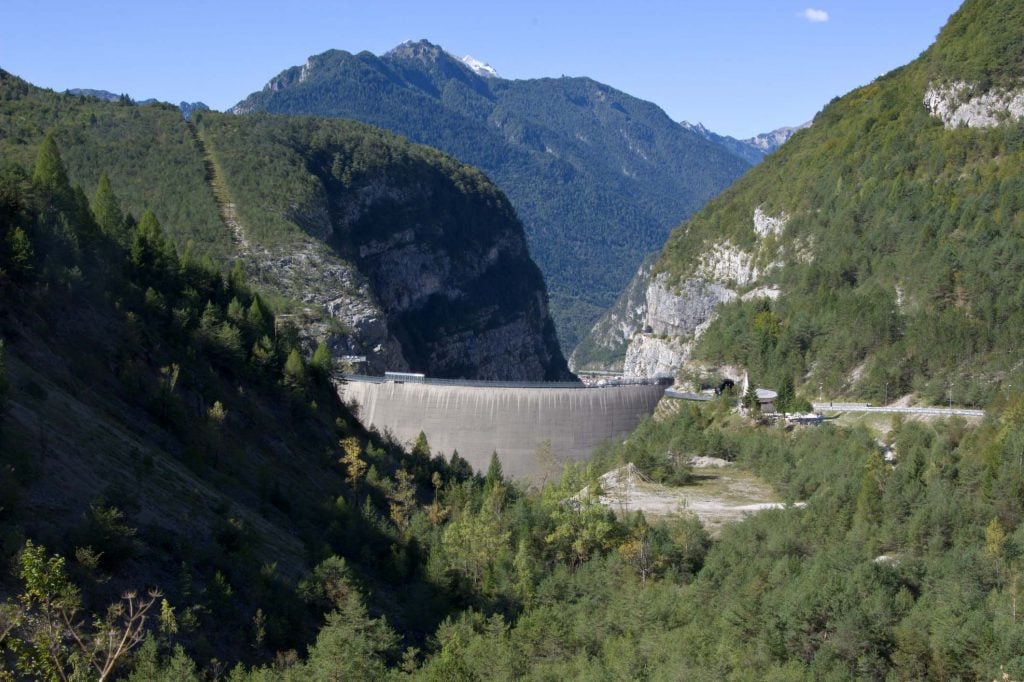
The Tragedy Behind The News
Friuli earthquake of 1979, the more recent one in L’Aquila, Abruzzo, in 2009, the avalanche of Rigopiano in 2017, the collapse of Genoa bridge in 2018 – the list goes on; big and small, catastrophes with death tolls ranging from hundreds to a few.
Most of these events only reach us through the news. However, those “lucky enough” to hear witnesses’ personal accounts might learn something that goes beyond the questions of “Whose fault was it? How many people died? Why did it happen?”
We might learn about the fear, the hope, the confusion – how that event made an imprint on individual lives before the worst had even happened. We might learn about those who helped and the people we have lost.
“Often, when we talk about disaster, we forget to consider its effect on people. Disaster is a distant, impersonal word, sometimes so serious that it fails to convey any emotion. […] This strange mechanism of removal sometimes makes us forget that the big story is made up of many small chapters, individual human narratives of everyday life that reflect apparently banal sensations and emotions”
Iolanda Di Bonaventura, extract from the Director’s Statement of Vajont
We could relate to what it means to face a tragedy of that kind and to survive it, mentally as well as physically.
Vajont: A Project Supported by the Biennale College VR
The Biennale College Virtual Reality is a program developed by La Biennale di Venezia to “help independent filmmakers and creative professionals from all over the world to appropriate the medium of VR” (source). Projects selected for the final phase of the College are awarded 60 000 euros in financial support and will be presented at the next Venice Film Festival.
I was immediately intrigued, when, last year, I heard that an Italian project dealing with Vajont had been selected. Was it going to be a reconstruction of the tragedy in VR? Was it going to reflect on its causes? Was it going to be a documentary on Vajont as it stands now?
In early August, I met producer Saverio Trapasso, director Iolanda Di Bonaventura and the team from Artheria, the production company working on Vajont. To start with, I was told that Vajont will not be a VR experience revolving around the tragedy, but rather an experience about identity and people. Specifically, about a married couple that needs to decide whether to stay in their house or listen to signs coming from the mountain and leave before a terrible unknown comes to pass.
The Importance of Ethical Storytelling
This approach caught my attention seeing that I, for one, am easily enthralled by such catastrophes. However, spectacularizing them simply to create a wow effect (as in, “Oh my God!”) detracts from their true meaning. Not to mention that overtly extravagant displays risk disrespecting those who have lost everything in the disaster.
For this reason, Iolanda’s use of the word “ethical” to describe her vision really stuck with me.
“The goal of this project is not to sensationalize the disaster nor precisely document the most important events that have occurred. Instead, there is a focus on the reawakening of the processes of memory and awareness, regardless of locality. Being aware of the significance of instinctive feelings and dynamics is what is really important to us”.
Iolanda Di Bonaventura, director
While she decided to focus on Vajont, the project could have also been set in New Orleans in 2005 or Haiti in 2010 – or even Pompei in 79 AD. For all we know, its significance would remain unchanged.
“What remains of our identity when we abandon the place where we grew up, our home, and our possessions?” and “As human beings, what are we, ultimately?” These universal questions that Iolanda Di Bonaventura poses throughout Vajont remain with you precisely because you are the one who needs to answer them by experiencing the story.
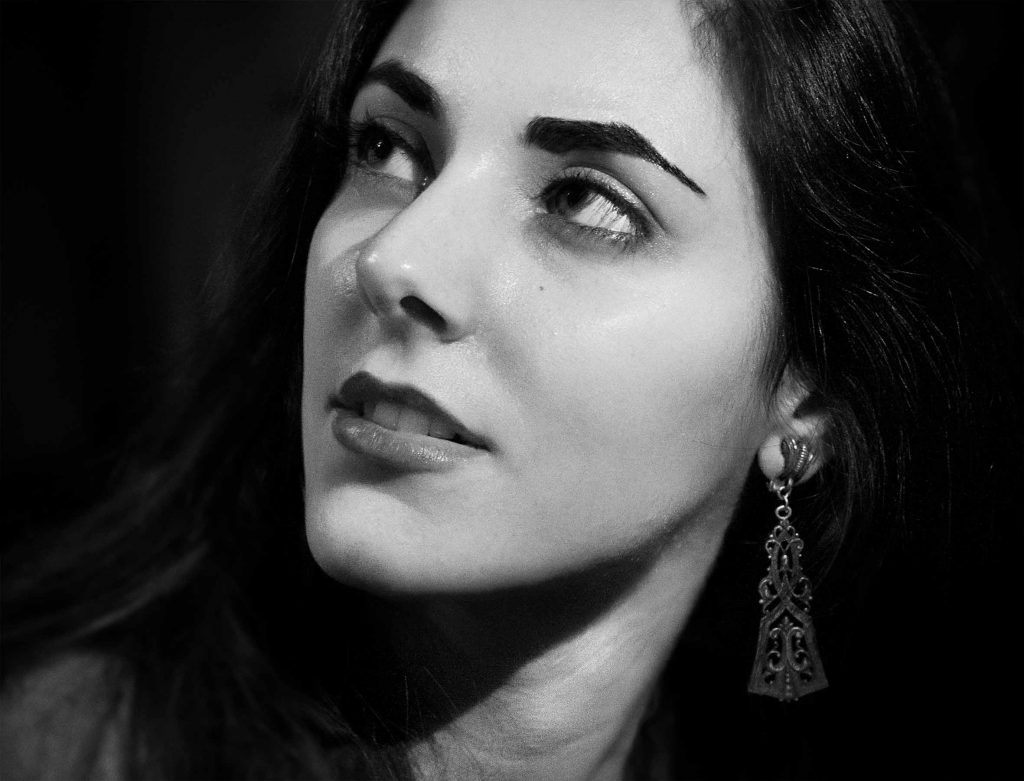
The Changing Role of the Audience in Vajont
Vajont places the audience in a precise role. However, this role dynamically changes throughout the narrative. I found this change fascinating and partially reminiscent of the process director Ricardo Laganaro made his audience undergo in A Linha (The Line).
You start the installation almost as an outside witness. To avoid spoilers and allow the audience to enjoy the creative team’s approach for themselves, I will not reveal much more except that this initial sequence felt very familiar – nostalgic, even.
It transported me to my childhood, to evenings spent on the sofa with a plate of tiramisu and sharing stories with family and friends – an immediate blast-from-the-past feeling conveyed in a very simple interactive reply that is approachable even to people that are new to virtual reality.
Then, you move to a room where an incredible transition makes the past come alive around you. There, minute yet beautiful details make you aware that you are not an outsider anymore: the skirt you’re wearing flowing about you, your hands, the shadow you cast on the wall (this especially caught my attention, since I rarely see it in VR).
Now, you have taken on a specific role in the story and you can make an impact on the narrative.
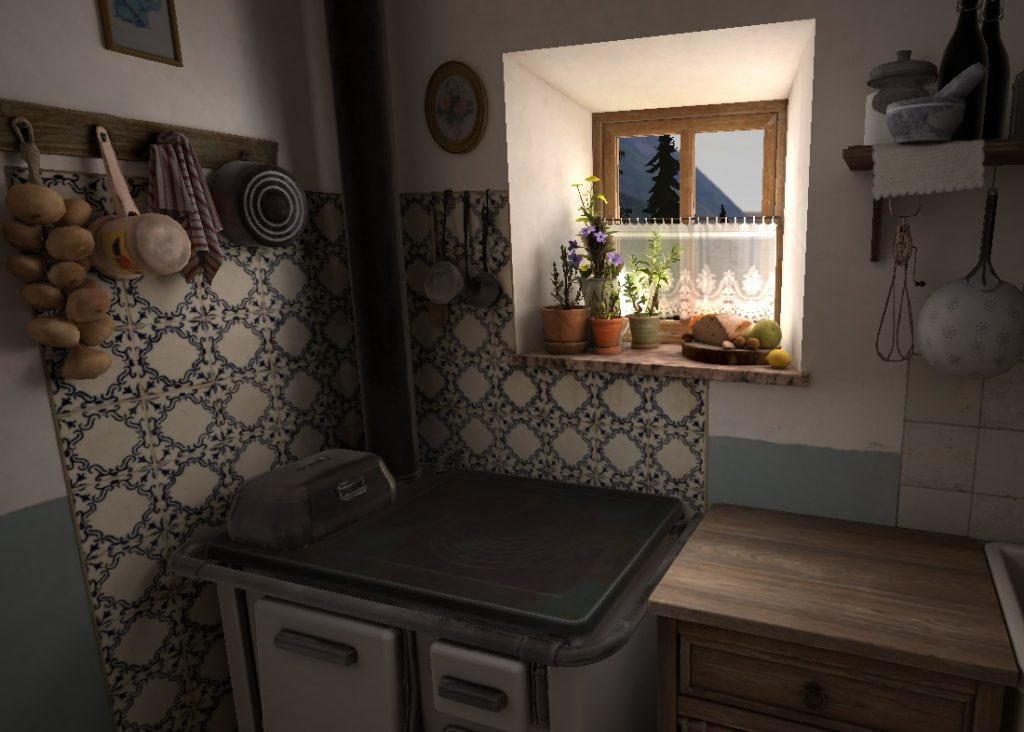
Alone in the Vajont World
Explore the room – an old kitchen – and you’ll start noticing more details. I cannot emphasize it enough: look at everything. You never know when an object might provoke what appears to be a small voice in your headset that turns out to be a thought coming from within the character you are interpreting. It is a quiet whisper in your ears, a voice that feels like it is lost in time; and because of this you perceive it coming directly from you, rather than from around you.
This moment you spend alone was an interesting creative decision: it gives you time to settle into your role and to understand a bit more who you are, without anything else there to distract you.
You know that feeling when you enter a VR room and want to explore everything and end up missing the plot because you’ve been distracted by the enchanting visuals? Well, here the exploration forms an integral part of the narrative.
The radio indirectly offers you some context and so do some of the character’s thoughts, as well as a visit from your neighbor… the plot is imparted in such a natural way that it feels like you are really living the moment, beginning to notice the small warning signs that things might not be OK – forebears of an oncoming tragedy.
Playing the Part: The Role of Empathy
Then, a virtual character, your husband, enters the room. This marks the start of the third and most interactive part of the experience. You begin talking to your husband – what you say and do may change the story’s outcome. He insists to stay in the house, even though all of your neighbors have started leaving, so you must convince him to leave, too… or will he persuade you to stay?
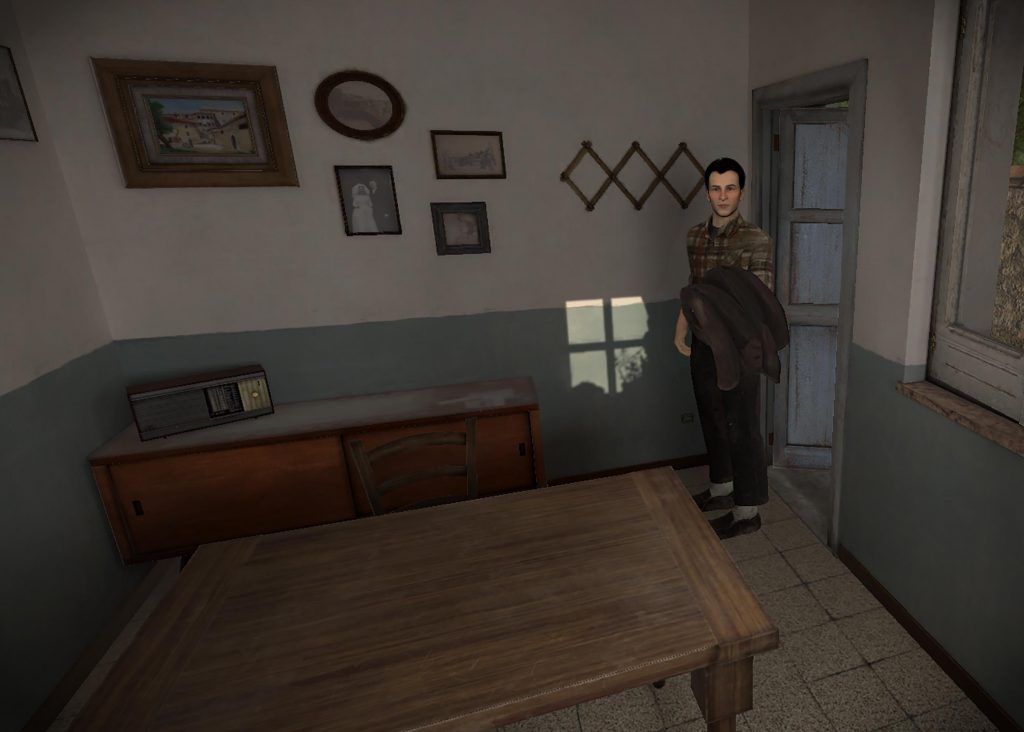
This interactivity introduces a level of theatrical performance to Vajont that further pushes the sensation of corporeality and inner reflection.
For a long time, VR has been described as an “empathy machine”. This might be a controversial viewpoint nowadays, but it feels like an inescapable fact when, in VR, you face new and difficult situations you haven’t experienced personally. For Vajont, though, empathy is not the main goal, but the inherent tool needed to reach it, which – in my opinion – is both understanding and participating.
In fact, removing empathy from the equation makes it quite obvious as to what’s the “right path” to take in the dialogue – the one most people would choose.
However, if you listen to the dialogues intently, if you have understood your character, if you can put yourself into your husband’s shoes – that is, empathize with him… you might end up taking the less obvious path – a phenomenon that feels surprisingly similar to real life and can bring about dire consequences.
Users and Characters: The Transmedia Approach
As such, even an active viewer playing the main character could take to very two different approaches: retain the perspective of an outsider and go for the obvious dialogue choices; or melt into the character and deal with more ambiguous decisions.
The latter is a challenge that I personally like step up to and which requires a certain predisposition to just let it go and play. Only by going through this ordeal, though, do you begin to understand what would push someone to risk their own life in the face of such clear dangers.
To help the user in this empathic approach, letters shared between the two main characters started appearing on the official website of Vajont during August. This content grants future audiences a better understanding of their relationship, of their love for each other and why they act the way they do.
Moreover, it adds a significant transmedia element to Vajont. It’s an interesting approach to spark people’s curiosity about immersive works in general. More importantly, however, it can help intensify the audience’s experience and their investment in the characters’ thoughts and fate.
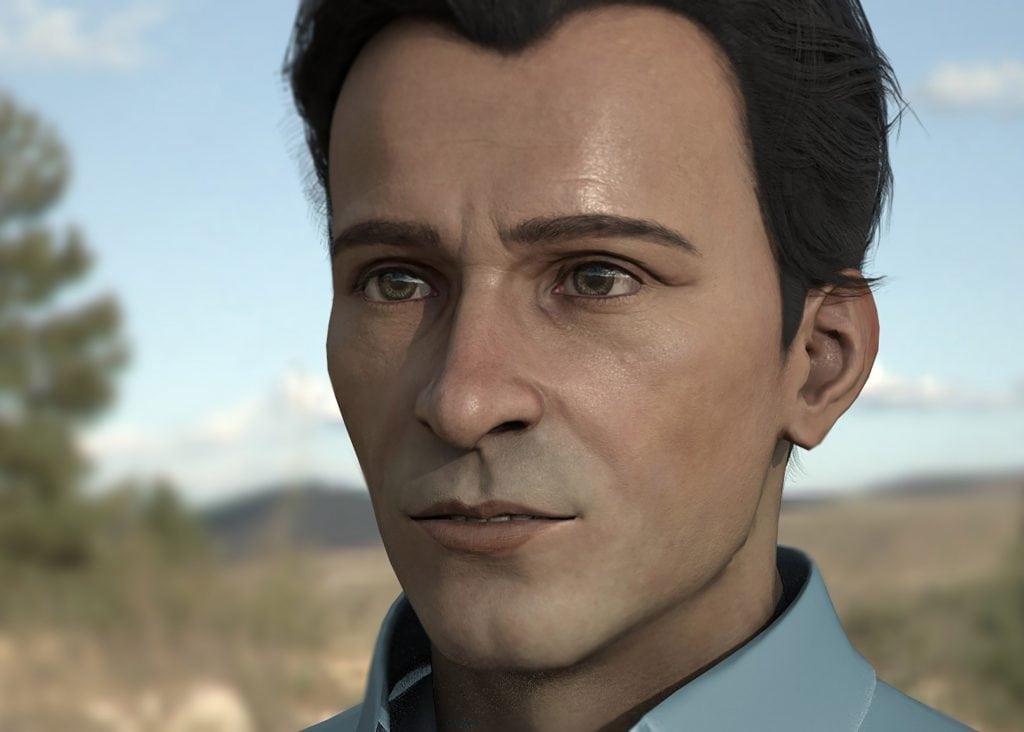
Research in Vajont
I appreciate works – immersive or not – that showcase solid research and an appreciation for accuracy. I felt instantly familiar inside the kitchen, since it reminded me of my grandparents’ house and of old houses you can still visit today when taking a trip to Italian mountains.
Vajont doesn’t reflect classic sixties vibes as you might come to expect. While our idea of the sixties comes mainly from American influences, Italy in the sixties looked quite different – especially in small and isolated towns in the mountains which haven’t changed much over the decades.
What we are presented with is an accurate, yet personal representation – one that goes beyond settings and props. Indeed, Vajont is also a sociological and psychological work of research.
Interviews with residents of Longarone, some of which survived the tragedy themselves, helped shape the aforementioned ethical approach. Their stories were not simply used to create a “cinematic representation,” as Iolanda points out in her vision. Rather, these personal accounts left those listening with a profound impression, allowing them to take a much more humble, respectful and human approach to their work on Vajont.
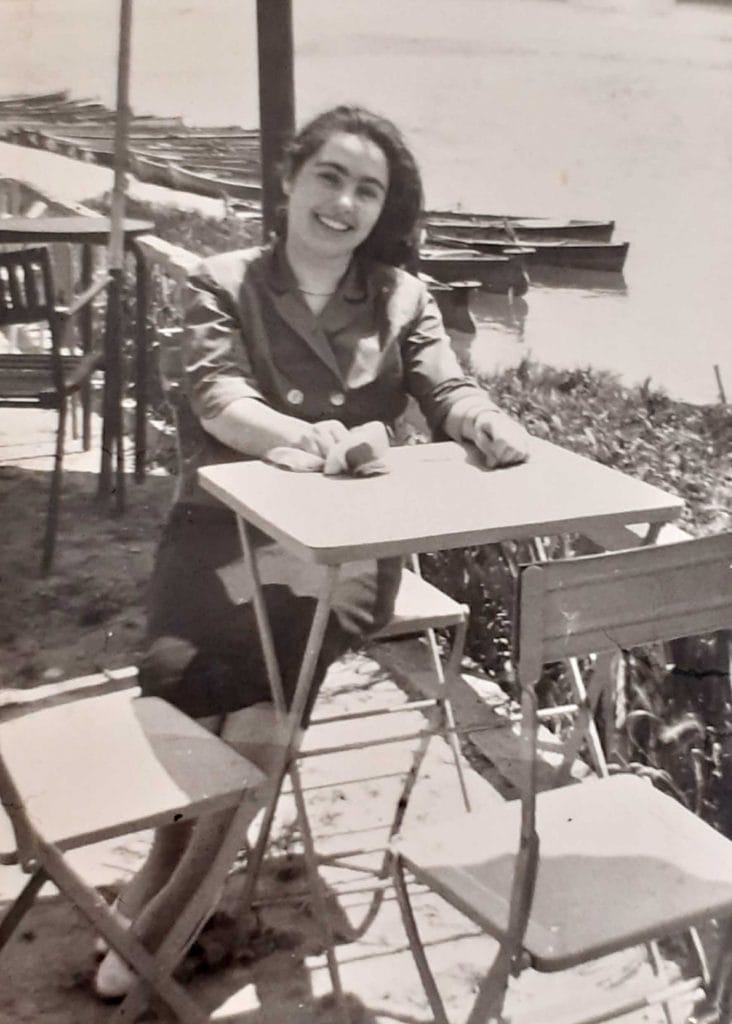
Changes Brought About by COVID-19
I’ll fall for anything even remotely theatrical in VR: physical objects to touch, a part to play yourself, actors to play with.
However, when I visited Artheria, I was not expecting that their work would be that kind of piece. Vajont was planned to incorporate a physical setting to interact with, smells to perceive, and actions to complete using your body. In one scene, for instance, you would physically sit facing your husband’s virtual appearance, having to look directly into his eyes in order to progress down a certain story path.
Then, due to the COVID-19 situation, La Biennale banned all physical installations for this edition of Venice VR. Artheria was forced to rethink the project from the ground up.
To adapt such a deeply interactive and immersive experience into an entirely virtual version is a complex and risky task. Unlike designing for strictly virtual content, adapting a physically augmented experience means important real-world assets must be replaced without losing their special characteristics. Producers need to be pragmatic and devise solutions in advance to capture the audience. Both Lucid by Pete Short and Wolves in the Walls by Pete Bellington are prime examples for how this can be accomplished successfully.
However, adaptation alone won’t suffice if the pre-production process is forced to move away from the initial concept and work with wholly different elements – a rewrite is in order.
I must say I was fascinated by the kind of rewriting I got a glimpse into, through the words of Saverio Trapasso.
“I also hadn’t foreseen the changes we would have to make in Vajont, compared to the original design: renouncing the real scenography, which would support what we experienced in VR; renouncing a system of interactions based on the real movements of the participant’s body, such as ‘I sit’ or ‘I stand’; and finally, renouncing the integrated hand tracking, and using joysticks instead – a solution certainly more widespread among users of VR experiences, who have their own home systems for enjoying different pieces at home” (source) […] “So, basically, the biggest changes were [made] to the user experience”
Saverio Trapasso, producer
Vajont: New Possibilities for Distribution?
After testing the modified version, I can say the changes – painful as they were – have proven effective. The feeling of immersion remains, even if most objects have lost their tactile dimension. On the other hand, your character’s inner monolog really comes into its own now, breathing life and meaning into the things you happen to inspect.
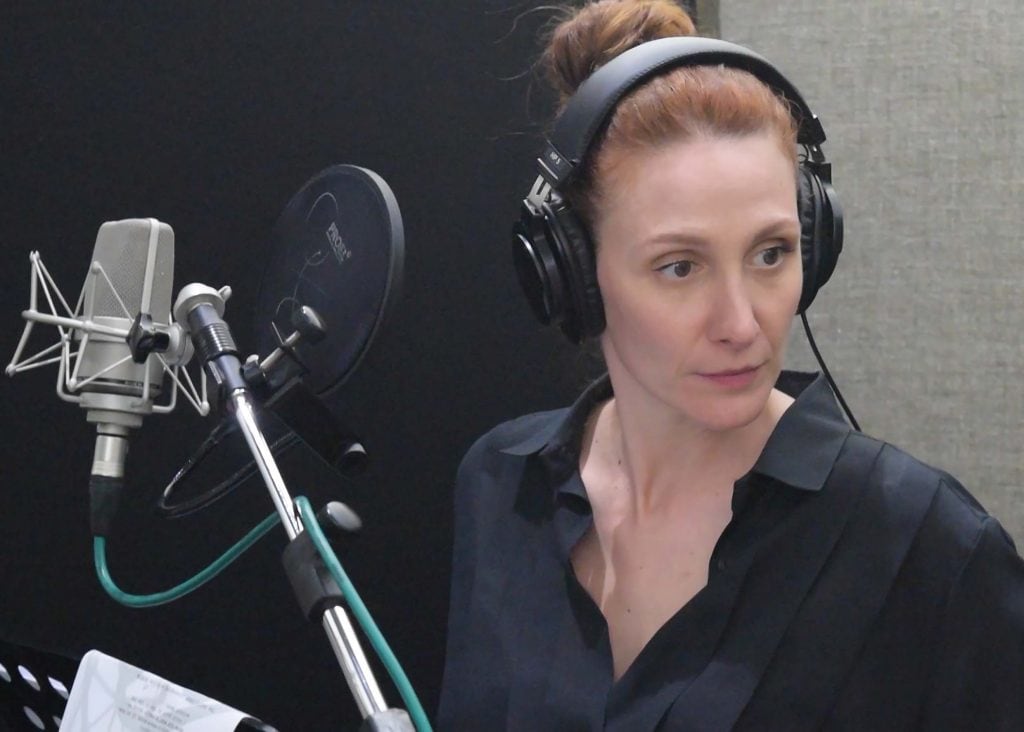
Moreover, Vajont makes clever use of space. Thankfully, the confined setting can be navigated by teleporting, making it easy to experience from home. The looming presence of the dam that can be seen through the windows and the garden behind the door impart the feeling of being part of a much larger place. If only you could step outside into this fascinating reality…
We will never find out what Vajont would have been like had the global pandemic not struck. However, Iolanda Di Bonaventura’s work will enjoy a farther reach than usual and maybe even convince a new audience of virtual reality and its possibilities.
After all, inspiring more people to reflect the ethics and empathy involved in a disaster, instead of merely gawking at the shocking visuals, might be worth the sacrifice.
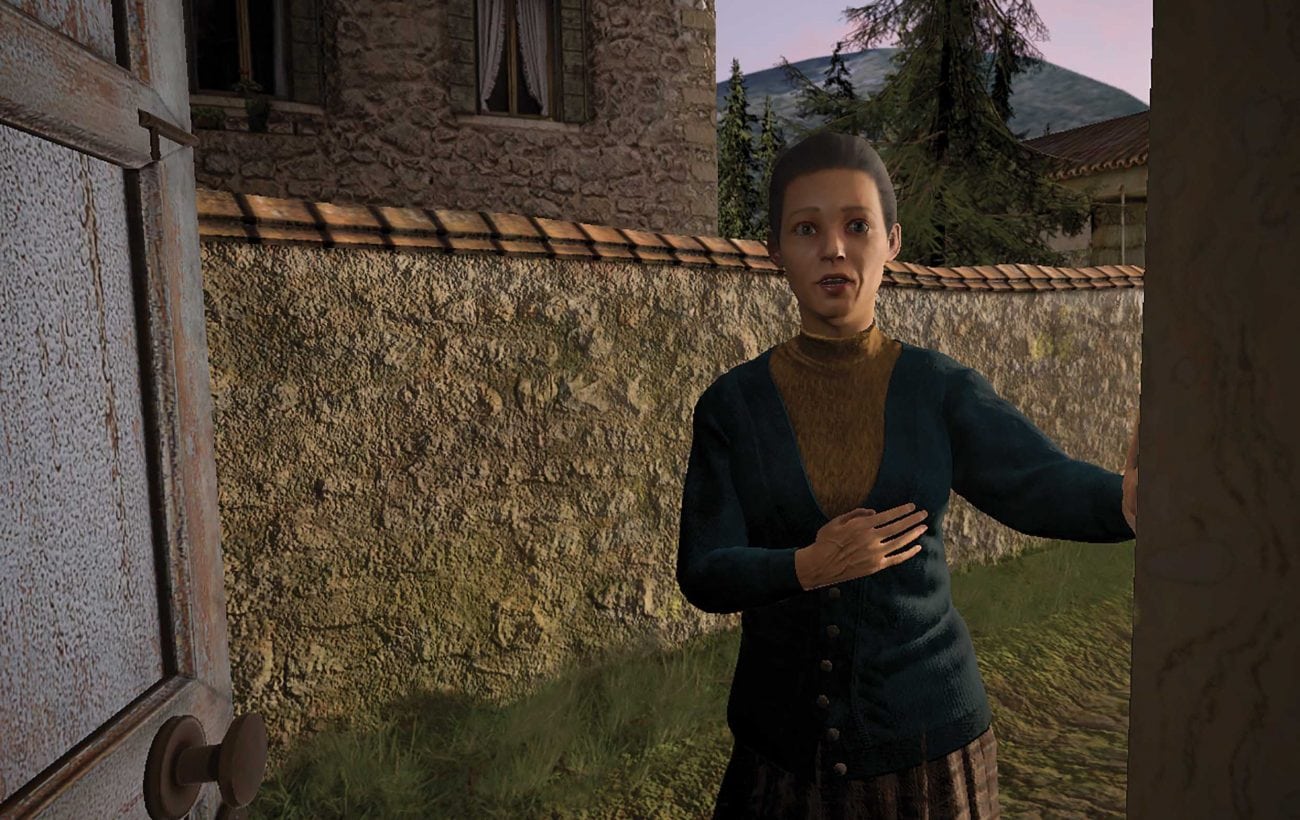
2 comments on “Venice VR: Vajont and the Question of Ethics and Empathy”